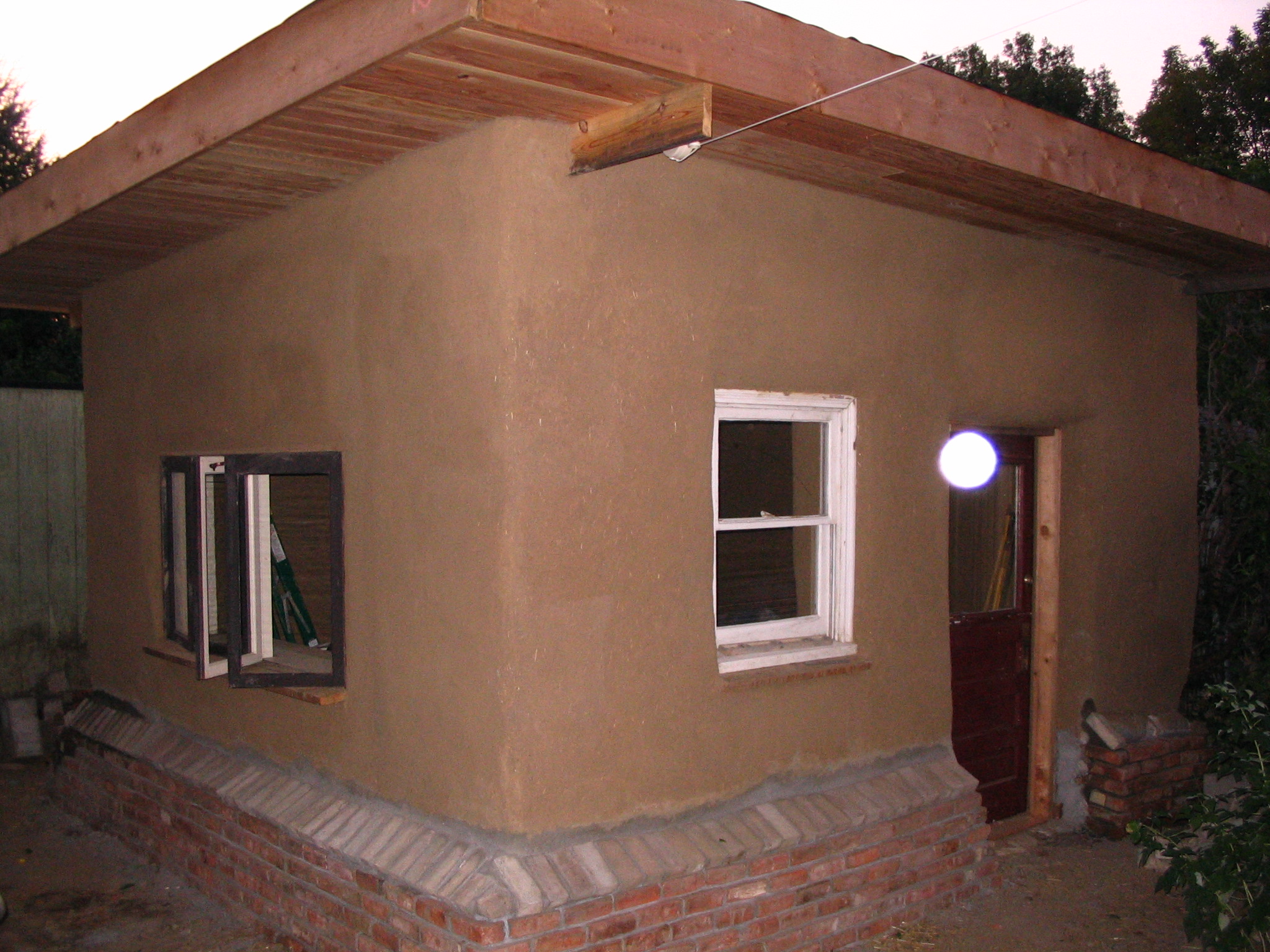Why Build with Earth?
"The choices we make today affect who we will be tomorrow."
Why build with earth, Continued
Advantages of Earthen Building
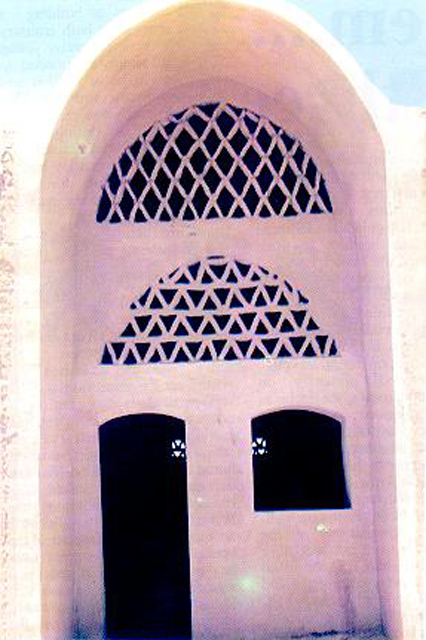
Efficiency
Rising fuel costs mean transportation of materials to a construction site can greatly increase the cost per square foot of a finished building. Earth is probably the most efficient building material available to us. Compare overall efficiency of creating a structure including all materials acquisition and refinement, and steel or concrete cannot yet compete with local earthen mixtures. Using dense materials like earth allow a house to maintain a much smaller temperature fluctuation than the outside air. That is because the dense walls gain and release heat very slowly. During a cold night, earthen walls release heat into the house all night long.
Flexibility
Earth can be shaped and treated in many ways to create an enormous variety of results. Earth lends itself to organic design and form, and yet can be formed into the same shapes and styles that are popular in modern architecture. There are hundreds of different earthen building techniques in the world, giving us a lot to draw upon. Who knows what wonders of earthen architecture await us in the near future. This building material is very versatile; literally the entire built environment can be made of it.
Density
Dense walls block sound waves better than anything else, making for an extremely quiet interior with great privacy between rooms. This can make a very noticeable difference in urban environments when compared with most wood-frame housing. Dense, massive walls also means greater protection from fire, wind, water, stray projectiles, electromagnetic and microwaves.
Non-toxic
Many people with extreme chemical sensitivity have found that earthen walls are the solution to their health and comfort. Earthen plasters and floors are a classy, chemical-free way to line the inside of your house. These can be installed in almost any house, even over existing surfaces, and are comparable in cost to other systems.
Beauty
Thousands of years of tradition in earth building give us a beautiful foundation in creative forms, building techniques, and methods that unify architecture and landscape. It is this harmony with nature that allows a building to endure centuries. We are proud to carry on the beautiful tradition of earth building, while remaining innovative during this time in history.

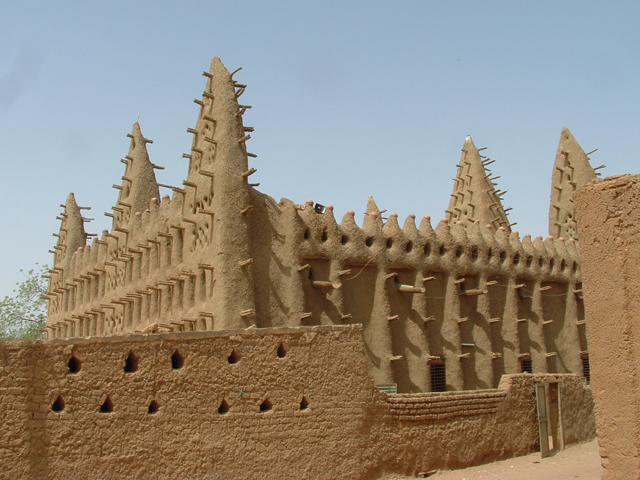
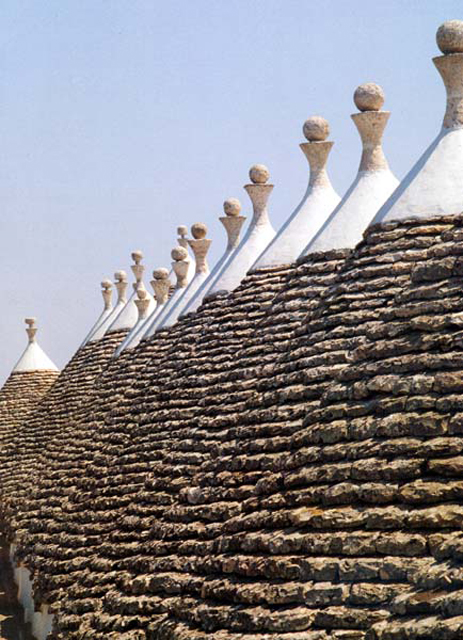
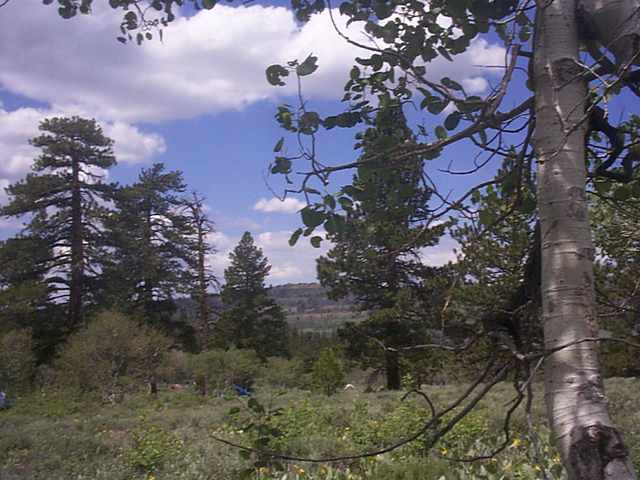
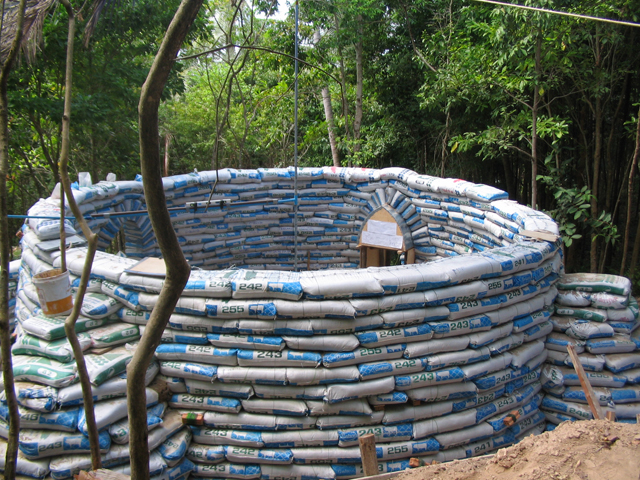
Why build with earth, Continued
- Today people are realizing that an ecological crisis is underway. We must do whatever we can to reduce over-consumption of earth's resources.
- Because of its accessibility and affordability, earthen building will always be an incredible tool for empowering people globally.
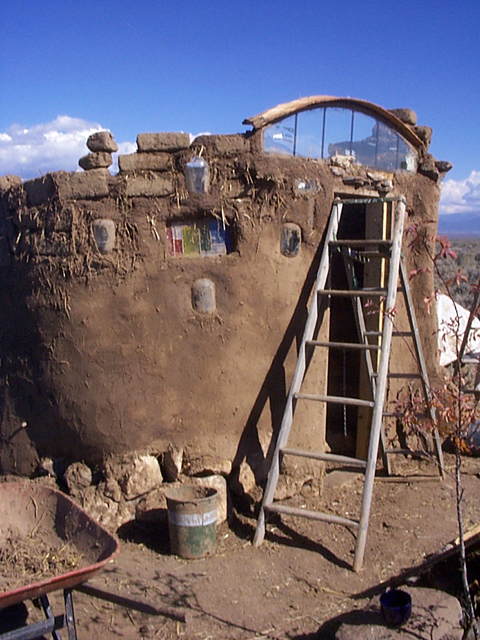
- Building with your hands is very satisfying; an expression of who you are and where you come from.
- Building one's own home is hands-on research that gives people a relationship to their buildings as they inhabit them.
- Earthen materials allow builders to improvise the exact placement of windows, doors, and walls to create comfortable micro-climates inside and outside according to the angles of the sun and moon.
- Over 1/3 of the earth's human population lives in earthen dwellings. Many new earth buildings are coming up in developed countries, where the movement reaches for new artistic heights.
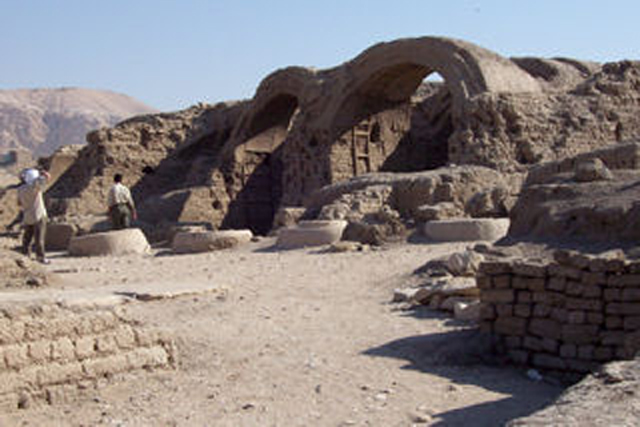
- Buildings that are just the right size for their occupants emphasize quality in spatial organization because their size requires it. This greatly reduces costs to build, heat, and cool. Sculptural buildings make this kind of designing easy and fun.
- 1/4 of the world's population uses 3/4 of the available resources.
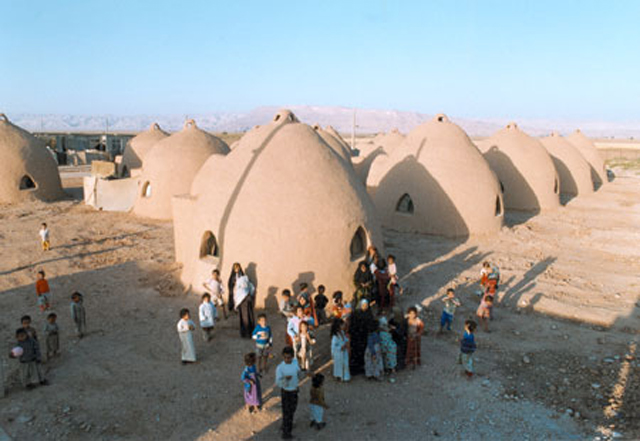
- Construction wastes globally account for 40% of all waste, 40 % of goods, 40% of energy usage, + 18% of fresh water usage globally.
- Well over 100 million people are homeless, and 1/4 of the world population does not have access to decent housing. Earthen building is a great solution whether it is to house the poor, or reduce wastefulenergy consumption. Earthen building has also proven to be ideal for modern emergency shelter needs.
- The majority of the world's forests have already been destroyed. Most of the wood used today goes into new construction. Some areas may become desertified for the long term, and even more resilient forests will not become old-growth again for at least several hundred years.

- A standard wood framed house consumes more than one acre of forest, and produces 2-4 tons of waste during construction.
- These days, humans use Cement in quantities greater than any substance except water. China alone produced over 1.4 gigatons in 2008, leading world production by a landslide. For every pound of cement produced, at least one pound of carbon dioxide is released into the atmosphere.
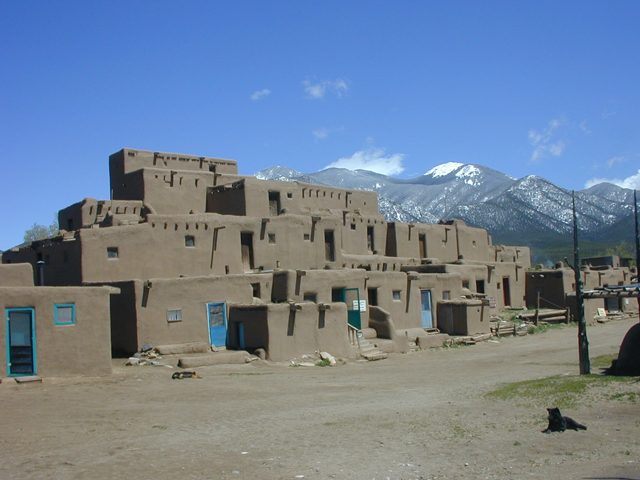
- Earthen construction can be used for vertical urban growth instead of cement. Twelve story earthen skyscrapers have stood for many centuries and remain today in several Middle-eastern and African cities.
- People have lived in earthen structures for thousands of years. Inhabited earth buildings over 400 years old exist by the thousands all over the globe. The earliest known villages were made of earth in Jericho, around 8300 B.C. Some of the oldest buildings that most people hear about used earthen building techniques: The Pyramids, The Great Wall of China, and Tonochtitlan in Mexico. The world's oldest earthen building still standing is about 3,300 years old! The Ramasseum, made of adobe bricks, was built around 1,300 BC in the old city of Thebes, next to the Nile. Taos Pueblo can claim at least one thousand years of continuous use by their people.
Advantages of Earthbag Building
Durability is very high for earthbag structures. Because of their density and massiveness, they are unaffected by high winds, floods, fire, or projectiles.
The two courses of barb wire between each layer of bags add great tensile strength to a wall. 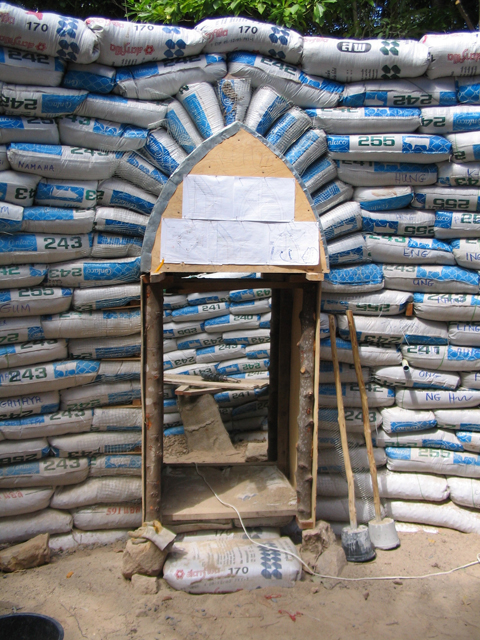 This is something that brick structures lack. Extensive tests were conducted and
published by Tom Harp and John Regner ("Sandbag/Superadobe/Superblock: A Code
Official Perspective," Building Standards 62, No. 5 (1998) pg. 28). Earthbag domes
remained standing through earthquake conditions (compression and lateral force
loads) equal to a very large quake.
This is something that brick structures lack. Extensive tests were conducted and
published by Tom Harp and John Regner ("Sandbag/Superadobe/Superblock: A Code
Official Perspective," Building Standards 62, No. 5 (1998) pg. 28). Earthbag domes
remained standing through earthquake conditions (compression and lateral force
loads) equal to a very large quake.
Fill materials of many types can be used in earthbags, usually obtained from the site itself. The bags themselves can be made from either synthetic or natural material depending on the application. The fill can be stabilised with cement or lime as needed for foundations, doorways, windows, or areas frequently exposed to water.
On-site materials makup the majority of what is needed. Only the bags and and barbed wire must be brought in when building in remote locations. This greatly reduces transportation costs, as well as ecological impact.
Remodelling is easy becuase the same fill material, bags, and barbed wire can be used again. There is therefore no waste when improvising or remodeling an earthbag wall.
Outer coverings can include: Plaster of sand with clay, lime, cement, a combination of the prior, mosaic tile, ceramic or cement shingles, thatch, tensile fabric, or stabilized fabric. Designs may also include some wood to allow a roof structure over the earth bags, to which any kind of roofing may be attached.
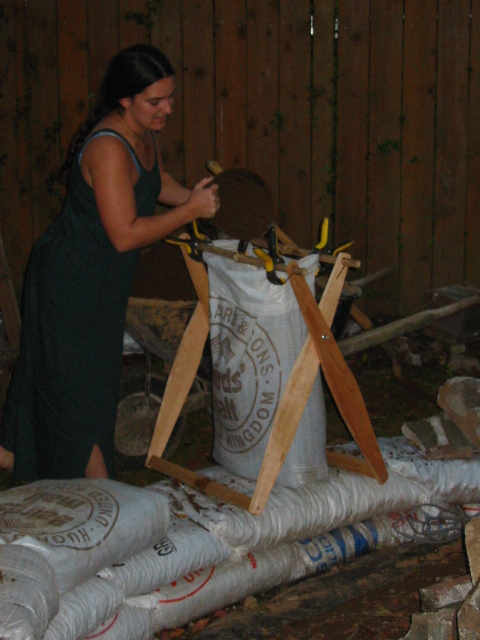
Little water is needed to build with earthbags. This helps reduce environmental costs, and also makes construction in remote locations easier.
Little waste is created from the building process. A few paper cement bags are often the only "throw-away" item.
No wood is essential to the earthbag system. This is great for areas where wood is scarce, which is soon to be everywhere.
Thermal mass combined with solar orientation allows these buildings to regulate their own internal temperature. This greatly reduces needs for expensive heating, cooling, or insulation, therefore reducing the ecological footprint.
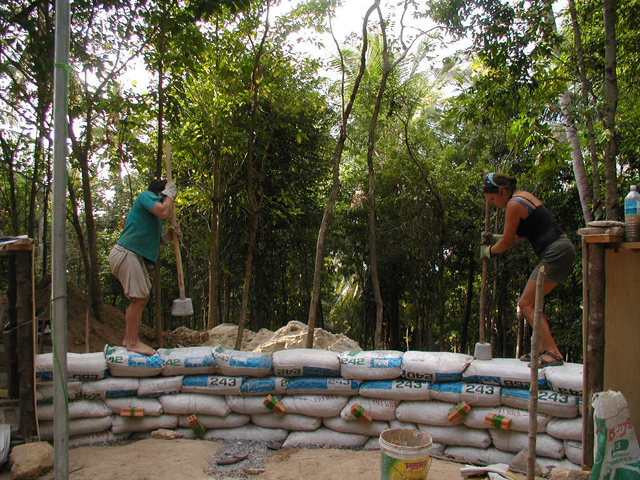
Little skilled labor is needed with earthbag building. An inexperienced team can build effectively and rapidly after only one day of instruction. Skilled workers are needed only to direct, plaster, and finish details.
Rapid completion of earthbag buildings is possible because the technique is simple and repetitive. Earthbag building is significantly faster than cob, rammed earth, or conventional construction. The speed of building depends only on the physical stamina of the builders. Teams of builders can also work taking turns.
Resale values are potentially very high with well-built earthbag structures. They are becoming known as an effective green building method all over the world. Because of their ability to withstand anything, earthbag buildings should also retain value because they can last for hundreds of years or more with minimal maintenance.







